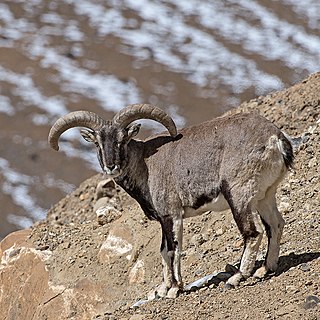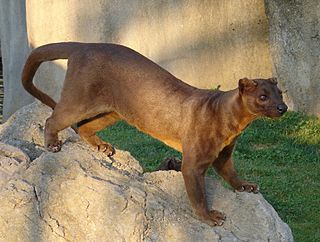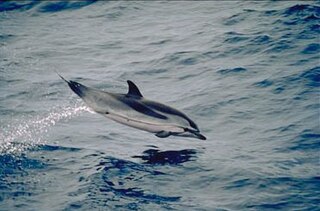 W
WThe African yellow bat is a species of bat in the family Vespertilionidae, the vesper bats. Other common names include African yellow house bat, yellow-bellied house bat, and Dingan's Bat. It is one of fifteen species in the genus Scotophilus.
 W
WThe Angolan free-tailed bat is a species of bat in the family Molossidae. It is found in Angola, Benin, Botswana, Burkina Faso, Burundi, Cameroon, the Republic of the Congo, the Democratic Republic of the Congo, Ivory Coast, Ethiopia, Gambia, Ghana, Guinea, Kenya, Malawi, Mali, Mozambique, Namibia, Niger, Nigeria, Rwanda, Senegal, Sierra Leone, Somalia, South Africa, South Sudan, Sudan, Swaziland, Tanzania, Togo, Uganda, Zambia, and Zimbabwe. Its natural habitats are dry and moist savanna, although it is sometimes found at the edges of woodlands.
 W
WThe bharal, also called the Helan Shan blue sheep, Chinese blue sheep, Himalayan blue sheep, or naur, is a caprid found in Bhutan, Gansu, the high Himalayas of India, Inner Mongolia, Myanmar, Nepal, Ningxia, Pakistan, Sichuan, and Tibet. The Helan Mountains of Ningxia have the highest concentration of bharal in the world, with 15 bharals per km2 and 30,000 in total. Its native names include yanyang (岩羊) in Mandarin, bharal, barhal, bharar, and bharut in Hindi, na or sna in Tibetan and Ladakh, nabo in Spitian, naur in Nepali and na or gnao in Bhutan.
 W
WThe Cape fox, also called the asse, cama fox or the silver-backed fox, is a small fox, native to southern Africa. It is also called a South African version of a fennec fox due to their big ears. It is the only true fox occurring in sub-Saharan Africa, and it retains primitive characteristics of Vulpes because it diverged early in the evolutionary history of the group.
 W
WThe crested mona monkey, also known as the crowned guenon, crowned monkey, golden-bellied guenon, or golden-bellied monkey,, is a species of African primate in the family Cercopithecidae found in west central Africa.
 W
WThe Egyptian weasel is a weasel species endemic to northern Egypt. It is listed as Least Concern on the IUCN Red List.
 W
WThe Egyptian wolf is a subspecies of African golden wolf native to northern, eastern and a part of western Africa.
 W
WThe fire-footed rope squirrel is a species of rodent in the family Sciuridae. It is found in Angola, Burundi, Cameroon, Republic of the Congo, Democratic Republic of the Congo, Ivory Coast, Equatorial Guinea, Gabon, Gambia, Ghana, Guinea, Guinea-Bissau, Liberia, Nigeria, Senegal, Sierra Leone, and Uganda. Its natural habitats are subtropical or tropical moist lowland forests, moist savanna, and plantations.
 W
WThe fishing cat is a medium-sized wild cat of South and Southeast Asia. Since 2016, it is listed as Vulnerable on the IUCN Red List. Fishing cat populations are threatened by destruction of wetlands and have declined severely over the last decade. The fishing cat lives foremost in the vicinity of wetlands, along rivers, streams, oxbow lakes, in swamps, and mangroves.
 W
WThe fossa is a cat-like, carnivorous mammal endemic to Madagascar. It is a member of the Eupleridae, a family of carnivorans closely related to the mongoose family Herpestidae. Its classification has been controversial because its physical traits resemble those of cats, yet other traits suggest a close relationship with viverrids. Its classification, along with that of the other Malagasy carnivores, influenced hypotheses about how many times mammalian carnivores have colonized Madagascar. With genetic studies demonstrating that the fossa and all other Malagasy carnivores are most closely related to each other forming a clade, recognized as the family Eupleridae, carnivorans are now thought to have colonized the island once, around 18 to 20 million years ago.
 W
WThe Indo-Pacific bottlenose dolphin is a species of bottlenose dolphin. This dolphin grows to 2.6 m (8.5 ft) long, and weighs up to 230 kg (510 lb). It lives in the waters around India, northern Australia, South China, the Red Sea, and the eastern coast of Africa. Its back is dark grey and its belly is lighter grey or nearly white with grey spots.
 W
WThe North African elephant shrew or North African sengi is a species of elephant shrew in the family Macroscelididae. It is found in Algeria, Libya, Morocco, and Tunisia, and is the only extant afrotherian within its range. The species was formerly classified in the genus Elephantulus, but molecular evidence indicates that it is more closely related to Petrodromus than to other members of Elephantulus. It was moved to a new genus, Petrosaltator, in 2016. The split with Petrodromus likely occurred during the Miocene period.
 W
WThe northern viscacha is a species of viscacha, a rodent in the family Chinchillidae. It is known from Peru and Chile, at elevations from 300 to 5000 m, and may also be present in Bolivia.
 W
WThe red-fronted lemur, also known as the red-fronted brown lemur or southern red-fronted brown lemur, is a species of lemur from Madagascar. Until 2001, it was considered a subspecies of the common brown lemur, E. fulvus. In 2001, E. fulvus was split into several separate species, including Eulemur rufus, in which this species was included. In 2008, E. rufus was split into two species, the red lemur and the red-fronted lemur. E. rufus covers the population on the west coast north of the Tsiribihina River and E. rufifrons covers the population on the west coast south of the Tsiribihina River and the population in eastern Madagascar. The species split was based on genetic and morphological evidence. Mitochondrial DNA analysis indicates that E. rufifrons may be more closely related to the common brown lemur, white-headed lemur and Sanford's brown lemur than it is to E. rufus.
 W
WThe rough-haired golden mole is a species of mammal that live mostly below ground. They have shiny coats of dense fur and a streamlined, formless appearance. They have no visible eyes or ears; in fact, they are blind - the small eyes are covered with hairy skin. The ears are small and are hidden in the animal's fur.[10]
 W
WThe Saharan striped polecat, also known as the Saharan striped weasel, Libyan striped weasel, and the North African striped weasel is a species of mammal in the family Mustelidae. This animal is sometimes characterized as being a part of the genus Poecilictis, and its coloration resembles that of the striped polecat.
 W
WThe Senegalese wolf, also known as the grey jackal, slender jackal or anthus, is the nominate subspecies of the African golden wolf native to Senegal.
 W
WThe Hispaniolan solenodon, also known as the Haitian solenodon, or agouta, is a solenodon found only on Hispaniola, the island shared by Haiti and the Dominican Republic. It was first described by Brandt in 1833. A similar but smaller species, Marcano's solenodon, once lived on the island, but became extinct after European colonization.
 W
WThe southern mountain cavy is a species of South American rodent in the family Caviidae.
 W
WThe spotted ground squirrel is a species of ground squirrel in the rodent family Sciuridae. It is found throughout Mexico and the central and western United States. Characterized by a white spotted back, the spotted ground squirrel is one of the smallest squirrels found in North America. They are mainly herbivorous, but also eat insects. A burrowing mammal, the spotted ground squirrel will make tunnels to store its food, as well as shelter and hibernation quarters.
 W
WThe striped dolphin is an extensively studied dolphin found in temperate and tropical waters of all the world's oceans. It is a member of the oceanic dolphin family, Delphinidae.
 W
WThe waterbuck is a large antelope found widely in sub-Saharan Africa. It is placed in the genus Kobus of the family Bovidae. It was first described by Irish naturalist William Ogilby in 1833. The thirteen subspecies are grouped under two varieties: the common or Ellipsiprymnus waterbuck and the Defassa waterbuck. The head-and-body length is typically between 177–235 cm (70–93 in) and the average height is between 120 and 136 cm. A sexually dimorphic antelope, males are taller as well as heavier than females. Males reach approximately 127 cm (50 in) at the shoulder, while females reach 119 cm (47 in). Males typically weigh 198–262 kg (437–578 lb) and females 161–214 kg (355–472 lb). The coat colour varies from brown to grey. The long, spiral horns, present only on males, curve backward, then forward and are 55–99 cm (22–39 in) long.
 W
WThe western purple-faced langur, also known as the north lowland wetzone purple-faced langur, is a subspecies of purple-faced langur endemic to Sri Lanka. It lives in the wet zone in western Sri Lanka around the former capital city of Colombo. The subspecies is generally gray-brown with lighter whiskers, a gray rump patch, and dark forearms and legs. Typical length is between 48 and 67 centimetres excluding tail, with a 59 to 85 centimetres tail. On average, males weigh 8.5 kilograms (19 lb) and females weigh 7.8 kilograms (17 lb).